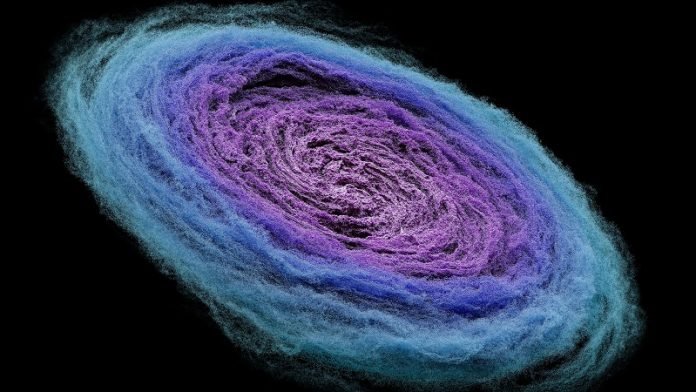
Once upon a time, astronomers believed that galaxies like our own Milky Way were rare gems in the early universe.
The theory was that the universe, in its young and chaotic days, couldn’t support such neatly structured galaxies.
Instead, galaxies were believed to be mostly irregular and oddly shaped due to frequent galactic collisions. But, as it turns out, the early universe might have been full of Milky Way twins!
A team of international researchers, using the super-advanced James Webb Space Telescope (JWST), has discovered that galaxies resembling the Milky Way are not rare at all. In fact, they dominate the universe and are quite common!
This finding is shaking up scientists’ understanding of how galaxies formed and developed.
The milky way and its twins
The Milky Way is what’s known as a disk galaxy. Imagine a giant cosmic pancake, swirling around a center, sometimes with spiral arms.
Scientists think that this type of galaxy is where life, as we know it, could develop due to the specific way they form. For a long time, it was believed that such galaxies were too delicate to exist in the early, rowdy days of the universe.
But this new research, published in The Astrophysical Journal, is flipping this idea on its head. The data from JWST shows that these disk galaxies are ten times more common than what was previously thought based on observations from the Hubble Space Telescope.
Rewriting cosmic history
Christopher Conselice, a professor of extragalactic astronomy, noted that earlier, using the Hubble Space Telescope, scientists thought such galaxies didn’t exist until the universe was around 6 billion years old.
But the James Webb Space Telescope, with its advanced capabilities, has revealed that galaxies similar to the Milky Way were formed nearly at the beginning of the universe!
This discovery is changing the whole narrative of cosmic evolution. Scientists now have to revisit and revise their theories on the formation of the first galaxies and understand how galaxies have evolved over the past 10 billion years.
What does this mean?
This revelation implies that the majority of stars exist and form within these Milky Way–like galaxies.
It’s leading scientists to question existing theories and probe further into the mysteries of the universe, such as the role of dark matter in the early universe, about which little is known.
The superior abilities of the JWST allow scientists to see the true structure of these galaxies for the first time, proving that the structures of galaxies form much earlier than anyone had anticipated.
It means that the universe got its act together much faster than previously thought, organizing itself into structured galaxies.
Key takeaways
This groundbreaking discovery is not just a testament to the advancement in our astronomical tools, but it’s also a humbling reminder of how much there is still to learn about our universe.
It invites new questions and opens up new possibilities in understanding the vast cosmos we are a part of.
The universe, it seems, has been full of surprises since its very beginning, and as we continue to explore, who knows what other secrets are waiting to be uncovered!
Follow us on Twitter for more articles about this topic.



